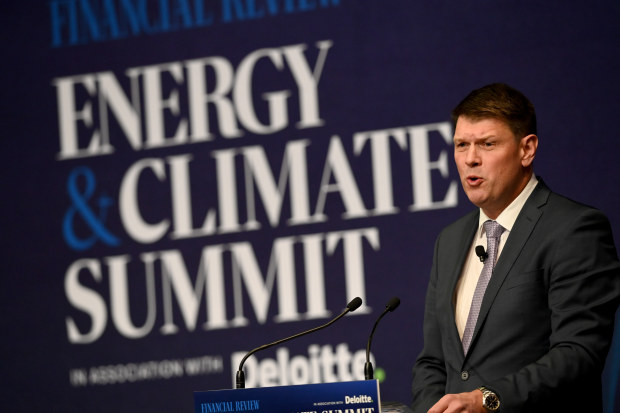“But many of those enormous changes will be made in very small ways by non-experts in homes, small businesses, and on the road.
“In the same way apps changed our attitude to mobile phones, the electrification of everything will change our household attitude to energy.“
Ms Collyer will say smart meters will empower customers to monitor and control their energy use and shop around for better retail offers.
”In the same way that my teenagers conduct their social lives through a myriad of apps and are connected to their school, work and friends in ways I couldn’t have imagined, we will see a generational shift in how people naturally engage with energy at home, in business, and on the road,” she will say.
But the AEMC chairwoman concedes regulators needed to do a better job selling the merits of using smart meters, with recent research showing 30 per cent of people with smart meters didn’t even know they had them.
Ms Collyer, who is also chairwoman of the Energy Security Board which is helping with the post-2025 design of the National Electricity Market – will say equity remains a major concern for energy regulators.
Earlier this month the Australian Energy Regulator released a report warning that lower socio-economic groups could bear the brunt of the costs of the energy transition.
“The cost of solar panels, let alone household batteries and EVs, is out of the question for many people,” Ms Collyer will say.
“As a renter, your access to solar power is dictated by the will of your landlord. There can be technical or legal difficulties installing EV chargers in apartment buildings that don’t affect freestanding homes.
“And it can still be a barrier to getting solar panels if you live somewhere with a lot of big trees. Three million rooftop generators is a lot – but it’s not everyone. We have to make plans that don’t build an even bigger energy division based on wealth and location.”

Transgrid chief executive Brett Redman said Australia needed to get a move on rolling out its energy projects. Jeremy Piper
It comes as Transgrid chief executive Brett Redman told the summit on Monday time was running out to build the transmission assets to support the 44 gigawatts of renewable energy which is expected to be connected to the grid by 2030.
“To achieve that 2030 target, we need to make the grid fit for renewables as quickly as possible,” Mr Redman said.
“That means we must put our foot on the accelerator and go faster than we’d ever thought possible. We must build grid scale wind and solar renewables from 16 gigawatts now to 44 gigawatts in 2030. Storage capacity in the form of batteries pumped hydro and virtual power plants need to increase from two gigawatts now to 15 gigawatts by 2030.”
Mr Redman, the former chief executive of AGL Energy, said future transmission assets may need to be integrated to deliver efficiencies and save money in the roll-out.
“We are at the point now where we must accelerate because two years too early is better than two years too late,” he said.
“Current global supply chain pressures are not forecast to ease any time soon. Economies of scale at this scale are rarely afforded an infrastructure delivery of this critical and cannot and must not be delayed.”
Mr Redman said he was encouraged by some state energy ministers, such as Victoria’s Lily D’Ambrosio, taking some ownership of social licence for new transmission projects, saying it can’t all be on the company.
Compensation also helps win over landowners.
“These big transmission projects benefit the many, but they really do impact the few so whatever we can do, to ease the way for the few. Don’t get me wrong, I know that money won’t solve it for everybody, but it can help.”

